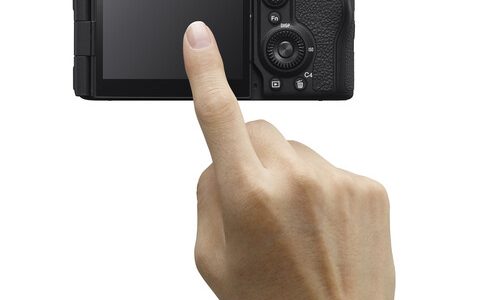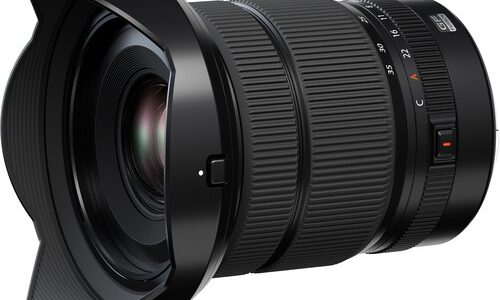

Sigma has become one of the most interesting companies in the industry in the past several years, with a fascinating new camera as of March 25, and a lot of great new lenses in the past year or so. Sigma has always been a lensmaker with a couple of niche bodies at any given time. They have made a few cameras since the early 1990s, and even rebadged some Ricoh SLRs in the 1970s, but never really had a lot of success with bodies. They are trying to change that with their participation in the L-mount alliance, but they are still essentially a lens company – and one of the most interesting companies in the lens business. Unlike the big camera makers, all of which are public, investor-owned companies, or Leica and Hasselblad, which are largely owned by hedge funds (Leica) or dronemaker DJI (Hasselblad), Sigma is a family-owned company that faces essentially no investor pressure to think short-term.
The current CEO, Kazuto Yamaki, is the son of Sigma founder Michihiro Yamaki. Unlike any other company I am aware of, Sigma produces all of their own gear, at a single factory in Japan. Almost every camera manufacturer owns factories in Thailand, China, Vietnam and other countries, and produces much of their gear away from their Japanese headquarters. Many makers also use contract manufacturing partners to produce equipment to their specifications, and some will simply buy another company’s lens, body or (especially) compact camera and slap their name on it. Most “Leica” compacts are really Panasonics – the only thing Leica about them is the red dot (and the price tag). There’s nothing wrong with them – they are often very nice cameras – but you can often have the same camera for $100-$200 less by opting for the Panasonic-branded version… Sigma is the opposite – everything happens in one place, and Yamaki-san could come strolling down the production line at any moment, making sure that any particular lens was up to snuff…
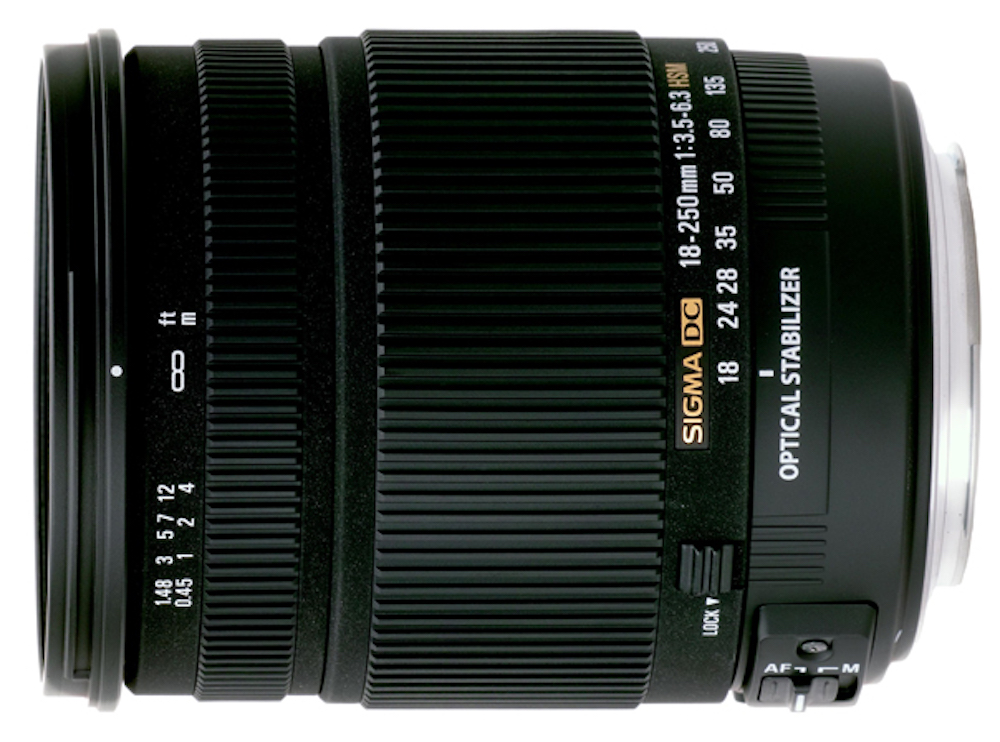
Sigma’s history as a lensmaker is interesting, Many of us remember Sigma from the 80s and 90s, as a manufacturer of “cheap and cheerful” lenses. They significantly undercut the camera manufacturers on price, offering a lot of image quality for the money, as well as offering some unusual focal lengths and combinations. They were among the first to 300mm in a zoom lens, when all the manufacturer zooms were stopping at 200 or 210mm (with a few ultratelephoto exceptions that were big, heavy, rare and expensive – Nikon made a tiny number of 1200-1700mm lenses specifically for photographing baseball, for example). They got a zoom out to 400, then 500, then 600, all well before the camera brands got anything mainstream that long. Sigma once even managed to make a 350-1200mm f11 zoom! They were also among the first with “travel lenses” like a 35-200, then a 28-300. Many of these old Sigma lenses claimed to be apochromatic, for rather loose definitions of apochromatic.
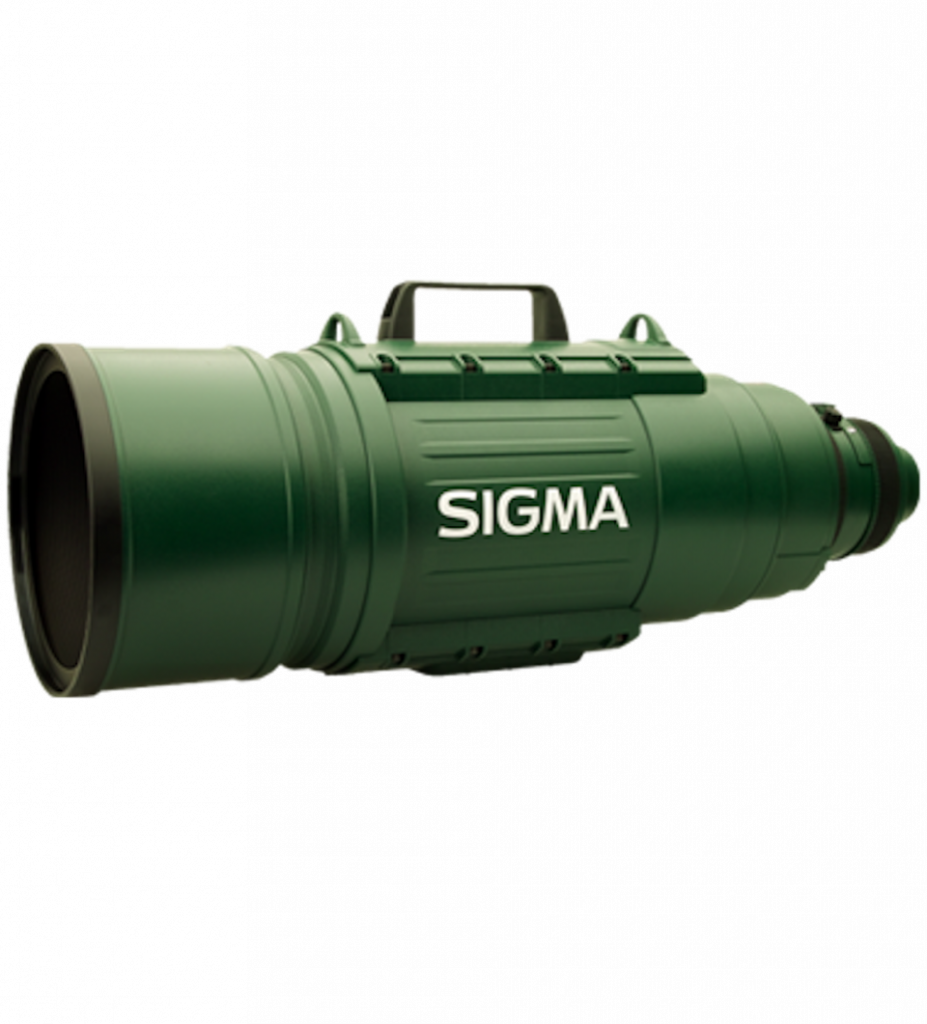
While a lot of photographers still think of Sigma that way, they’re now at least two full generations beyond that. In the early 2010s, Sigma introduced the first of their Art series lenses. Instead of being good lenses for the money, the goal of the Art series was to be great lenses – period. Even before the Art lenses, Sigma had made a bunch of higher-end telephotos that were fully professional-grade, but a lot of their business was still in cheap zooms. Just about every Art lens released since 2012 has been, at the very least, a very, very good lens – equivalent to a good lens from your favorite camera brand, if not better than that. They tend to be fast for their focal length, with a lot of f1.4 primes, and they are generally very well-built. Over the years, quite a number of the Art lenses have gone beyond very good, and reached the level of truly great lenses. They haven’t made anything that is QUITE the level of an Otus, but they have made lenses easily equivalent to anything BUT an Otus.
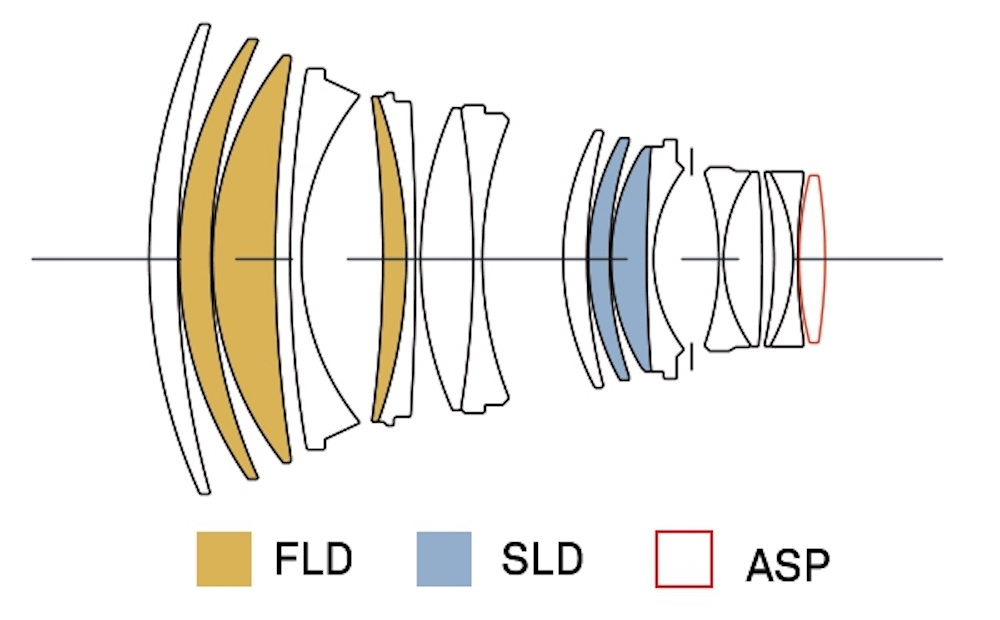
The Zeiss Otus and Sigma Art lenses pioneered the modern “super” primes – mid focal length prime lenses with ten or twelve elements, instead of six or seven, and far better corrected than the typical double-Gauss designs that were current from the 1920s through 2012 or so. Prior to the Otus and Art lines, most prime lenses from about 28mm through 85mm or even 135mm were essentially symmetrical designs, often variations on the venerable Zeiss Planar design, one of the double-Gauss family. Telephotos had powerful magnifying elements up front, and wide-angles were more complex because they had to be retrofocus designs – but your basic 50mm f1.4 was a six or seven element evolution of an 1896 design (although Planars became much more popular when lens coatings were improved in the 1950s). The Otus and Art lenses broke that mold, with highly corrected designs with ten or more elements. They were much more asymmetrical than earlier primes, and the improvement in image quality was remarkable. Lenses that had been “good enough” on film and on 6 MP DSLR sensors were showing their weakness on 24 MP and higher sensors, and the Art lenses were among the first relatively affordable optics that offered a significant step up.
As of 2021, just about any prime lens selling for over $700 is some form of a “super” design with ten or more elements. The most complex midrange prime I am aware of right now is Nikon’s 50mm f1.2, with 17 elements in 15 groups (although Sony’s new 50mm f1.2 GM, with “only” 14 elements, but no less than three of them extreme aspherics, comes close). Even some very compact, midpriced lenses (Fujifilm’s little f2 primes come to mind) turn out to be more modern asymmetrical ~10 element designs, using aspherical elements and perhaps low-dispersion glass. Canon and Nikon both make some classic double-Gauss Planar type DSLR lenses, and Sony and Canon make a few in the lower end of their mirrorless lineups. Historically, the advantage to the “classic” designs has been much smaller and lighter lenses – and the Sigma Art series have been among the largest and heaviest of the “super” lenses. They’ve usually been relatively affordable, and they’ve featured beautiful build quality and image quality – but they have generally been very solid chunks of metal and glass. Perhaps the most outrageous of all the Art lenses is the nearly 4-pound 105mm f1.4, with 17 elements, no less than six of which are either exotic glass or aspherics. It’s a gorgeous lens – but a 4-pound portrait lens?
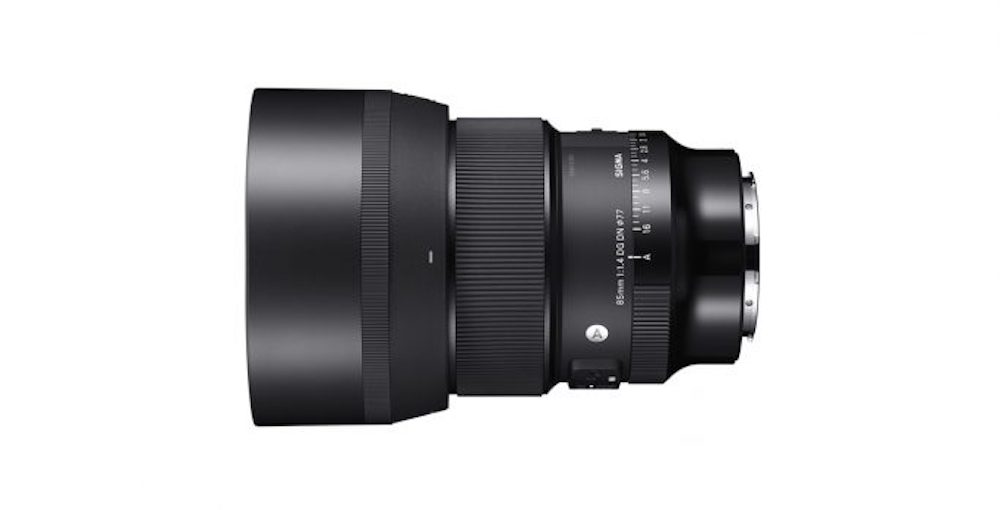
The latest development in Sigma’s Art line is the new DG DN Art mirrorless-specific lineup. These are much smaller and lighter than typical Art lenses, while maintaining the extremely high image quality. The DG DN lenses are Sigma’s first significant attempt at mirrorless-specific glass, although they have made a few primes in APS-C Sony E-mount and Micro 4/3 for a decade.
The three original Sigma mirrorless primes were all relatively simple designs, tiny f2.8 lenses with seven or eight elements, in focal lengths where many lenses were f1.8 and f1.4. The focal length range of 19, 30 and 60mm made sense on APS-C as a moderate wide-angle, a normal lens and a portrait lens. On Micro 4/3, they made a lot less sense – the 19mm was a slightly short normal, but nothing you could really call wide. The 30mm was also more or less a normal lens, but on the long side of normal (about the only time you usually see a 60mm focal length is on a macro lens). The 60mm was long for a portrait lens, yet short for a telephoto, on Micro 4/3.
Until the last year or so, Sigma’s presence in the mirrorless market was limited to these three optics and, more recently, a number of “stretched” DSLR lenses. When the L-mount alliance was announced in 2018, Sigma announced no less than 14 L-mount lenses available almost right away. How was this possible? There’s no way they could have designed all those lenses (which also showed up for Sony FE) at the same time, is there? The answer is that they didn’t… Those original 14 lenses (which are marked DG, but not DG DN) are simply some of Sigma’s best DSLR lenses with permanently attached mount adapters. Essentially, Sigma is using a lengthened rear barrel behind the rearmost element to make up for the shorter flange distance. They are even eligible for Sigma’s mount conversion service, including from DSLR to mirrorless mounts and vice versa. Sigma had previously released the MC-11 adapter, which converted modern Canon EF mount (or Sigma SA mount, but nobody owns many of those) Sigma lenses to Sony FE – these lenses pretty much build the MC-11 in.
These lenses are equivalent to an F-mount Nikkor on a Z body with the FTZ, or a Canon EF lens on an RF body on one of their adapters, with two minor exceptions. First, the built-in adapter eliminates a possible source of misalignment – with high-quality (Canon, Nikon FTZ, Sigma MC-11) adapters, the possibility of misalignment is much reduced compared to cheap adapters – but the only way to eliminate it is to do what Sigma’s done here and build the adapter in. On the other hand, you’re carrying most of an MC-11 on every lens, while an MC-11 in your bag could cover several Sigma lenses.
If you own modern Sigma lenses in Canon EF mount, and you want to use them on a Sony camera, should you have them converted by Sigma or use the MC-11? For some reason, Sigma won’t convert lenses to L-mount, even though they make the same lens in L-mount, and if your starting mount isn’t Canon, the MC-11 won’t work (but you may be able to convert the lens). First of all, if you intend to continue to use the lens on Canon as well as Sony, the MC-11 is the obvious choice – once you convert the lens, it’s forever in a Sony mount… Second, it’s somewhat more expensive to convert a lens – many lenses are $230 to convert (some, generally long or fast, lenses are $380) while the MC-11 is $199. Third, if you have multiple Sigma lenses, you pay for the conversion several times, but the MC-11 once. On the other hand, once the lens is converted, it’s a native lens, and there’s no possibility of misalignment. It’s probably worth converting lenses if you’re switching to Sony, have some beloved or valuable Sigma lenses (especially something big and heavy like a 500mm f4, which could put strain on the adapter), and want the best performance.
Last year, Sigma went well beyond just lenses with built-in adapters and a few simple native designs. They brought out some complex, brand-new designs for mirrorless mounts, and the results are stunning! The first one to come to photographers’ attention was the 85mm f1.4 DG DN Art. My initial reaction when I saw the lens was “that can’t be – it’s either a 50mm, or it’s an f1.8 lens, or it’s an old double-Gauss design”. There’s simply no way it’s a modern 85mm f1.4 in a package that small – it’s only a little over half the weight of the Sigma Art lens for DSLRs or the Otus, and it’s 30% lighter than the Sony G-Master. While it’s the same price as the old Art lens (although the latter is often on sale), it’s only 2/3 the price of the G-Master, and a fraction of the price of the Otus. Sigma really did do that – the 85mm f1.4 DG DN Art is a fully credible high-end portrait lens in a 22 oz package for $1199.
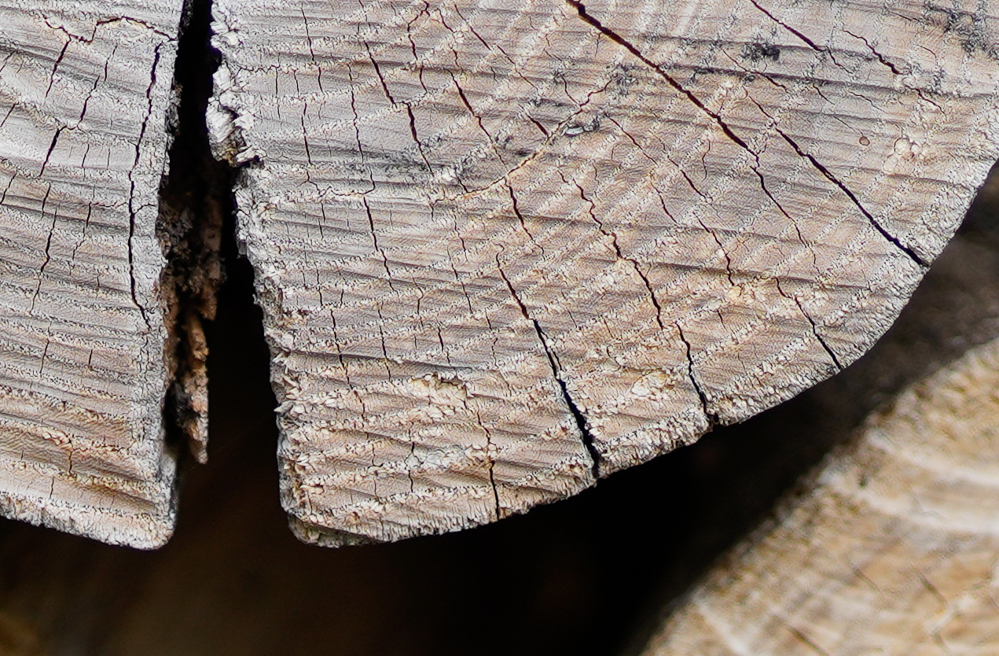

I had the Sigma, the G-Master and the Otus around simultaneously last year, all in 85mm f1.4, and the Sigma was (by far) the lens I would buy. I saw no performance reason to prefer the G-Master over the Sigma (or the other way around), and the 30% savings in both weight and price is extremely compelling. The Sigma is at least as well built as the Sony – both are very smooth, well sealed and I actually liked Sigma’s design slightly better (even beyond the obvious weight difference). This is certainly NOT the “cheap and cheerful” Sigma of the 1990s – this is a beautifully built lens! Think Canon L, ED-Nikkor, Sony G-Master and the best Fujifilm lenses and you’re in exactly the right range for build quality. The only lenses I have ever seen that are built better than this are a few Zeiss and Leica specials that are handmade for extraordinary prices (and lacking many modern features). Sigma’s hood always stayed on, while I’ve often had a bit of trouble with G-Master hoods (Sony’s big telephoto hoods are great, but some of the midrange lenses don’t stay locked as well as they might). A hood lock is a minor thing, but these two lenses are so comparable in so many elements of build that it’s down to little things like the hood lock.

The Sigma isn’t quite the Otus as far as performance goes – the microcontrast of the Otus is little short of astonishing (see Of Zen and Zeiss on this site for more on that special lens), but nothing is quite an Otus… For most photographers, most of the time, the Otus may be the lens you covet, but the Sigma Art is the lens you can afford, carry and use. Remember that the Otus is twice as heavy, over three times the price, and it is an extraordinarily inconvenient lens to use. It has neither autofocus nor weather sealing, and the only way to get the best performance out of it (e.g. to extract anything that the Sigma Art won’t give you with a lot less bother) is to focus extremely carefully using magnified live view.
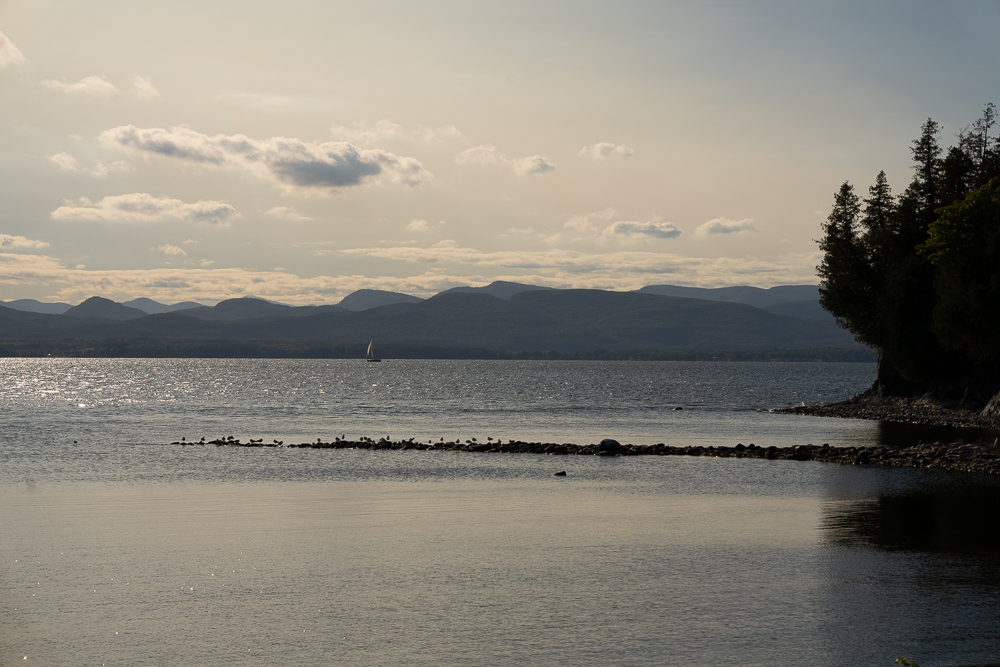

The challenge to the Otus is the new Fujifilm GFX 100S – yes, a body is challenging a lens. I haven’t used the medium-format Fujinons extensively – I had a couple of them in when I looked at the original GFX 100 when it came out, but that’s my only experience with them. I HAVE used a lot of APS-C Fujinons, and they are excellent lenses. The reason I mention the GFX 100S in the context of the Otus is that a 100S and the 110mm f2 lens are very close in price to a D850 or Z7 II with the Otus. How will the incredible quality of the Otus stand up against twice the pixels and 16-bit output? It’s also quite a bit cheaper to add lenses to the Fujifilm system than to add Otii of various focal lengths. Of course, the Fujifilm lenses are weather resistant AF lenses – a little slow to focus by modern full-frame standards, but nothing like a lens that can only be focused in magnified live view (by the way, the Otus is best suited to a mirrorless body, even though it needs an adapter, because of viewfinder live view – you’ll never focus it on a DSLR’s prism with the bright, but manual focus-challenged focusing screens they use today).
The 85mm f1.4 Sigma Art is my clear choice for an 85mm f1.4 today. Due to its size, weight and performance, I prefer it to the similarly performing Sony G-Master – and the fact that the Sigma is 2/3 the price makes the choice all the more clear. The other competitor I’ve used is the 85mm Zeiss Otus. Is that a better lens? Of course it is – it just might be the best lens in the world… Is it enough better to be worth the price and the hassle for most of us most of the time? No – it’s unusable for certain types of shooting due to the focus, and, if you are doing enough Otus-friendly work to consider owning an Otus, medium format should also be in the conversation. Renting an Otus is a different story, and many of us could benefit from renting one for a special shoot that uses its strengths and might teach us about care in photography.

There are a couple of competitors that I haven’t used. The omission I could test easily is the Nikkor Z 85mm f1.8 – I have a Z7 here and am extremely familiar with it, and I’ve had a request in for this lens for a while. Of course, the obvious difference between the Nikkor and the Sigma is that the Nikkor is 2/3 of a stop slower. It’s also a little lighter, and a little less bulky (67mm vs. 77mm filter size). If the 85mm has similar image quality to its 50mm stablemate (which I own) – and highly respected reviewer Thom Hogan says it’s at least as good – it’s going to be very similar in quality to the Sigma Art lens. Like the Sigma, it has very nice build quality – Z lenses feel different from the more metallic Sigmas, but they’re very well put together, with excellent sealing and smooth controls. $300 cheaper, about 25% smaller, but 2/3 of a stop slower… Interesting tradeoffs, but not really relevant unless you own two camera systems and don’t care which one you buy an 85mm for. The Nikkor comes only in Z-mount, while the Sigma comes in FE and L… The lens you choose will be determined by the system you own, and neither one will let you down.
There are two omissions that would be a lot harder to test with the gear I have around – both are Canon RF lenses, and I haven’t been able to pry an RF system loose from Canon (if anyone from Canon is reading this…). Canon brackets the Sigma lens with a clearly higher-end lens and a much lower-end model. The low-end lens is a $600 85mm f2 with consumer-grade build quality (no weather sealing, largely plastic). I’ve never handled an RF body or lens outside of a store, but other reviewers give a sense that it’s a good, but not great lens. A nice companion for an EOS-RP or R6, but not the lens most Luminous readers would choose, and no competition for the Sigma. The most interesting feature of the little Canon lens is that it’s also a macro lens (and 85mm is a useful macro focal length, unlike the inexplicably short macro lenses that have been popping up lately). The other Canon lens is a $2700 85mm f1.2 (with an apodizing version available for $300 more). It is reviewed as an exceptional lens – no surprise for a top-of-the-line Canon L that costs $2700. Unlike the Z-mount situation, where the Sigma, if it appeared, would be relatively similar to the existing Nikkor (a little faster for a little more money, both really excellent lenses), the Sigma could make a real impact on RF. It’s a LOT more lens than the little f2 lens, albeit for twice the price – and it’s a LOT more affordable and a LOT more portable than the f1.2 L lens.
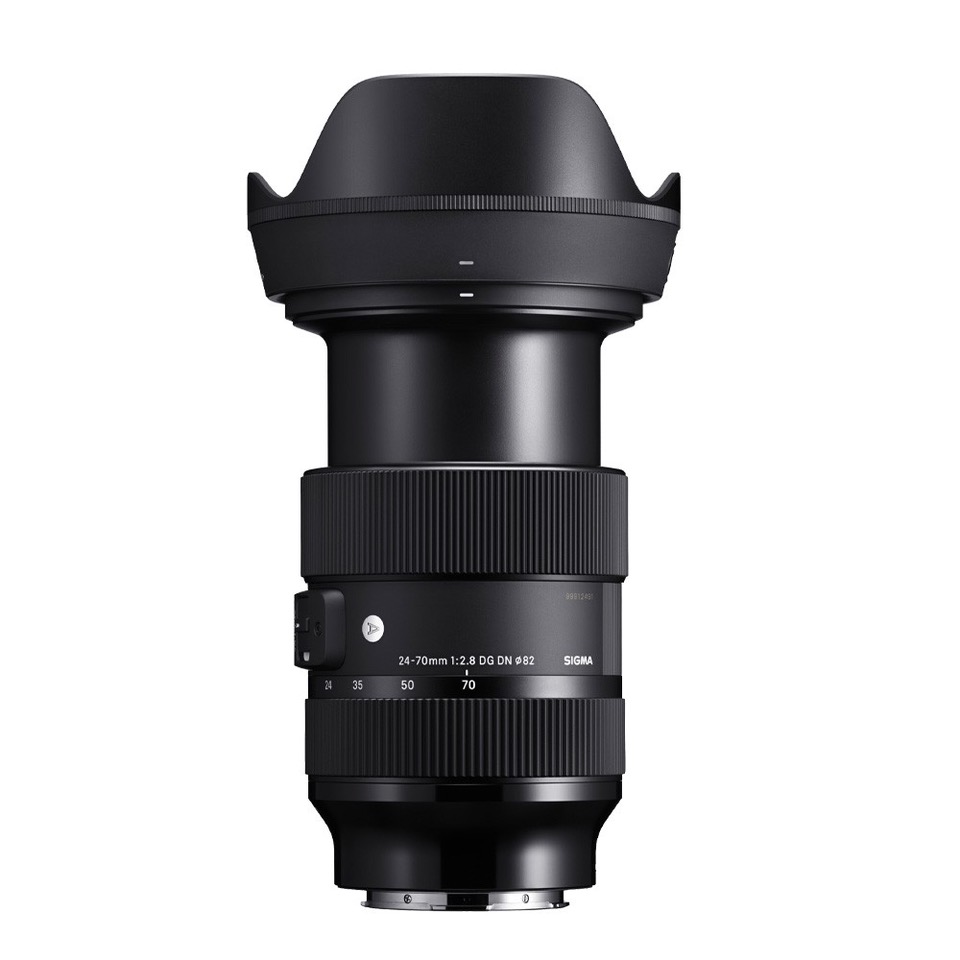
The second Sigma DG DN lens I’ve gotten to spend a lot of time with is the 24-70mm f2.8 Art, also for Sony FE. This is an interesting lens because it fits right into a weakness in Sony’s lineup. For all their excellent lenses, Sony really doesn’t have a terrific normal zoom below the 24-70mm f2.8 G-Master. The 24-105mm f4 G is a good lens, but decidedly not a great one. Adding the extra focal length from 70mm to 105mm makes a lens significantly harder to design. It goes from just less than a 3:1 zoom to a 4.5:1 zoom, and that’s a much harder lens to make.

The old 24-70mm f4 “Zeiss” is one of the oldest of Sony’s FE lenses, and it’s far from perfect even on the original A7r. I no longer have one around to try on the A7r IV, but I suspect the results would be embarrassing if I did. We’ve learned a lot about lens design in the eight years since the ”Zeiss” was released, especially about how to take advantage of the strengths of mirrorless mounts. The 28-70mm f3.5-5.6 is not only another original FE lens, but one that was built to a very low price point. Barely adequate at 24 MP, it is probably terrible on higher-resolution bodies (my very little experience with it is at 24 MP). While I don’t have the experience to judge the 28-70 adequately, other reviewers bear out my limited experience that it’s a kit lens, and not a particularly special one. I’ve never used a 24-70mm f2.8 G-Master, but no matter how good a lens it is (and I’ve heard it’s excellent), it’s a $2200 lens that doesn’t get discounted with a body, and it’s a heavy lens.

Sigma’s 24-70mm f2.8 DG DN Art steps right into the void in Sony’s lens line. It’s a really superb lens, and it’s actually slightly cheaper than the 24-105mm f4 G, and exactly half the price of the G-Master. It’s only a little smaller and lighter than the G-Master, and it is heavier than the 24-105mm, so it’s a substantial chunk of metal and glass. It’s beautifully built, with the smoothness of a Sigma Art lens.
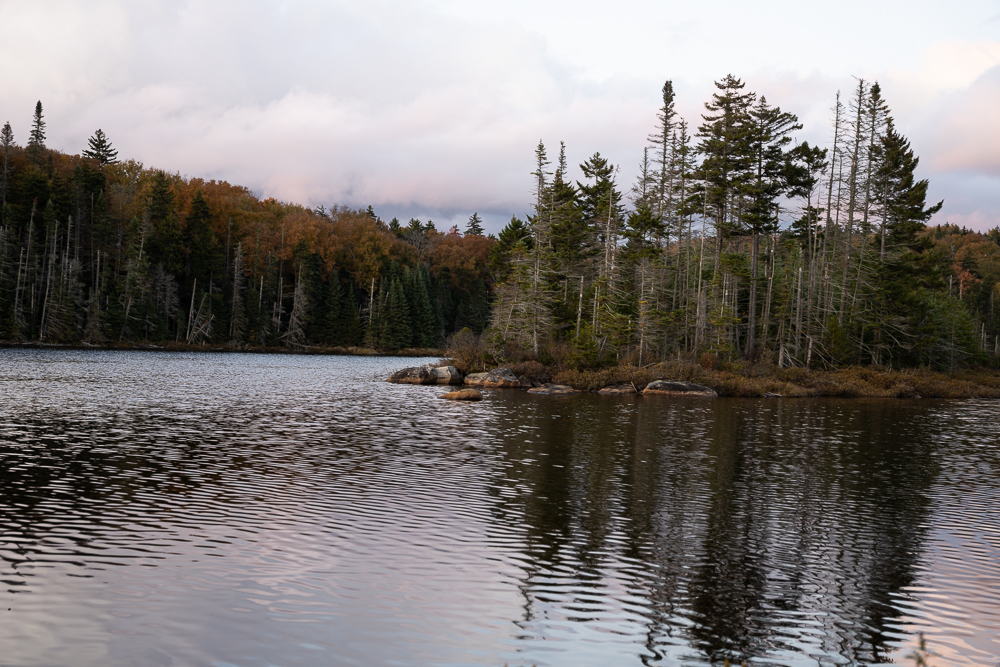
Most high-end lenses are very well built these days, but different manufacturers have different styles. Fujinons inevitably feel like lenses from another time period, even though their optics are fully up to date. You could be excused for thinking a Fujinon was a really nice 1980’s Nikkor until you looked inside and discovered several aspheric and ED elements, along with a nice job of full weather sealing. Some of them even feature old-style engraved depth of field scales and physically connected manual focus rings. Canon RF lenses and Z mount Nikkors are exactly the opposite, with customizable control rings instead of marked aperture rings and sleek, minimalist designs. If there’s a depth of field scale, it comes courtesy of a little OLED display (on a few Z lenses). Sony and Sigma have both sought out a middle ground where primes tend to have marked aperture rings, but zooms don’t, even if they have constant maximum apertures. There’s a lot of sleek modernity, but also a lot of exposed metal (a Z Nikkor with polycarbonate cladding will also have a metal barrel, but this may not be obvious). All of these lenses are beautifully constructed – just different designs.

There’s no mistaking the 24-70mm f2.8 for anything but an Art lens. It has Sigma’s all-black design language, with lustre metal interspersed with generous, knurled zoom and focus rings. A silver dot bearing the capital letter A identifies it as one of Sigma’s best. No matter how beautiful a lens it is, it wouldn’t be worth much if it didn’t perform. Fortunately, it’s an excellent performer, tack-sharp with low (and easily corrected) distortion. A surprising feature, and one that has become somewhat of a signature of Sigma lenses going back to the 1990s, is that it focuses closer than most would expect. It’s a $1100 lens that performs (and feels) like it should be a $1500-$2500 lens, the typical range for elite 24-70mm f2.8 zooms. When you have it on the camera, there’s no good way to tell that this is a third-party lens. It’s a very quick and sure focuser on the A7r IV, and the rings turn very smoothly – as least as well as on any native lens. Annoyingly, the zoom ring rotates in the opposite direction from a typical Sony (or Nikon) lens, following Canon convention (this is true of all Sigma lenses, and can trip up a photographer with a mixed bag of Sigma and Sony lenses). Sigma has been doing it this way for years, probably because the majority of their DSLR lens sales were for Canon…
Compared to their own DSLR version of a 24-70mm f2.8, Sigma has managed to shave about 20% off the weight, but any lens that gets as wide as 24mm, while being as fast as f2.8, is going to be a substantial item. I asked Jack Howard at Sigma about whether they’d consider making a f4 version that performed as well, in hopes of shaving off another 30% or so. He was noncommittal at the time, but Sigma just released an interesting lens that fills that niche. Rather than the 24-70mm f4 I asked for, it is a 28-70mm f2.8, and it’s actually slightly lighter than the 24-70mm f4 Nikkor that is one of my favorite hiking lenses, as well as being about 40% lighter than the 24-70mm Art. I haven’t gotten to play with a 28-70mm f2.8 Sigma Contemporary yet, but I look forward to it. I’m not sure whether I prefer the extra stop, or the extra 4mm at the wide end, assuming that the 28-70mm f2.8 on the A7r IV is a comparable performer to the 24-70mm f4 on the Z7. One concern I have is that the weather sealing on the 28-70mm is partial, unlike the very thorough sealing on the Nikkor and the 24-70mm Art.
Would I recommend the 24-70mm f2.8 Sigma Art? It’s an easy Highly Recommended, for its performance, build quality and price. Every Sony shooter with a high-resolution camera should own it, perhaps unless they already own the equivalent G-Master. Most of us take far more pictures with a standard zoom than we care to admit – no matter how many fancy lenes we own, I suspect that most of our shooting days include images taken with a standard zoom, and that more of our compositions are with a standard zoom than with any other lens. I say compositions rather than images because long telephotos are so difficult to aim. When I compose an image with the 24-70mm Art, I’ll probably take one version of it, maybe two or three if the situation is tricky – the shutter speed is slow, or I’m not sure what exposure I’ll prefer and I bracket. When I’m shooting birds at 600mm with the 200-600mm f5.6-6.3G, I’m far more likely to fire off a burst of ten or twelve, to make sure I get one with the bird’s eye in focus, or with the arrangement of wings I want. Those are ten or twelve images, but they’re one composition, one concept. The hit rate on more normal lenses is much higher, so the 200-600 may be responsible for more shutter clicks, but fewer distinct images, than the 24-70mm.
This is the best reasonably priced standard zoom for Sony FE, and it’s a lens well worth having for every Sony FE shooter. Kudos to Sigma. I don’t know L-mount well, so I’m less sure how it fits in the landscape there, where there are a bewildering array of choices, ranging from a tiny Panasonic 20-60mm f3.5-5.6 on up to a Leica 24-90mm f2.8-4 that weighs 2.5 lbs and costs $5500. Something that demonstrates just how useful a lens this is is that, as of this writing, the Sigma 24-70mm f2.8 DG DN Art (to use its full title) is what B&H uses to illustrate the very idea of lens… On their photography entry page, the image of a generic “lens” is the Sigma….
I’ve also spent time with a few other Sigma lenses recently. The 100-400mm Contemporary was a part of Wildlife photography on a reasonable budget on The Luminous Landscape, and it was the budget choice there. It lost out for best overall to several much more expensive lenses, but it offers a really compelling combination of size, weight and cost. I looked at the little 45mm f2.8 alongside the original fp, and it, too was an impressive little lens. I’d like to see it on a high-resolution body since it kept up with the 24 MP sensor very easily, but the other lenses I had at the time were all on 46 or 61 MP sensors. The 45mm f2.8 is the first of a series of small, light f2.8 primes for mirrorless that Sigma is calling the I series. They make a lot of sense on a lightweight body like a Sony A7C or one of Sigma’s own fp bodies. Unless you’re going for a very specific bokeh effect, you may well not need a lens faster than f2.8, and these are well-sized to fit the compact bodies, which an f1.2 lens can’t be. This is the concept pioneered by the Leica Summicrons, and similar to Fujifilm’s f2 (but APS-C, depth of field is going to be similar) “Fujicrons” and Sony’s new compact G series primes. I’ve had the 14-24mm f2.8 DG DN Art as well, and look for that in an upcoming wide-angle article. Overall, I’ve been impressed by every Sigma lens that’s come through here – the best of them are truly world-class, and every optic has been compelling for what it is.
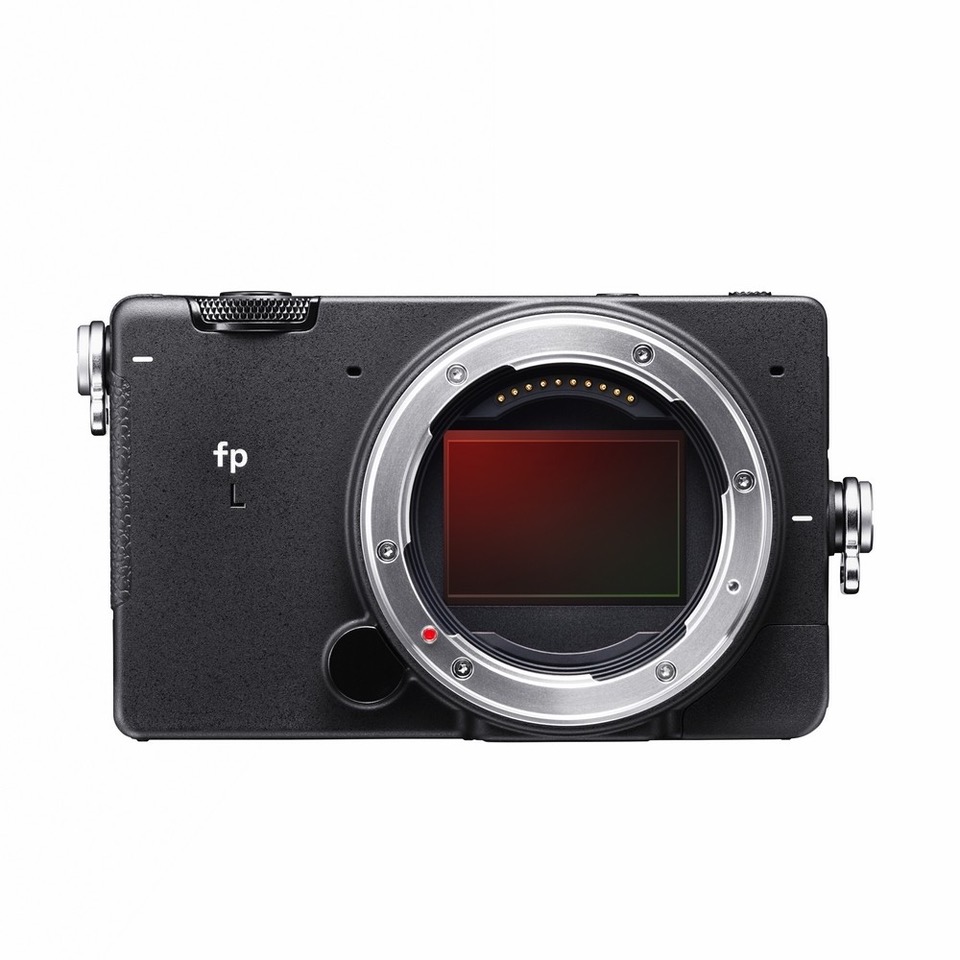
More or less alongside the 28-70mm f2.8 Contemporary, Sigma just released a new camera body. It’s the fp L, a version of the original fp that includes a 61 mp sensor that seems to be at least closely related to the one in the Sony A7r IV. If it’s a reasonable camera to use, it offers an unbelievable ratio of image quality to weight – it’s well under a pound for the body, with one of the best sensors in the business. There are a couple of concerning features, though. It’s viewfinderless (although Sigma, listening to the howls about this on the fp, did release an auxiliary electronic finder, which increases the weight, but still leaves it lighter than most high-resolution competitors). It depends entirely on the electronic shutter, which is a disaster for panning in video, and for indoor photography under fluorescent lights. Will it work for handheld still photographs outdoors? For images with any motion in them? It also uses Sigma’s horrid little bp-51 battery, which has about the same capacity as the unlamented Sony NP-FW50, without the smart features. It’s also around the size and capacity of Fujifilm’s NP-W 126S. It seems to be exactly the same battery as the Panasonic BLC12 and the Leica DC12, which opens up additional options for batteries and USB chargers, very useful when trying to backpack with a camera. Yes, the battery can charge in camera, but if you have a bunch of batteries on an extended hike, cycling them through the camera to charge at night is less than ideal – a tiny USB charger that works off a powerbank is a very useful thing. When I had an original fp here to test, I sometimes got less than 100 shots on a battery – it seems to have a high idle power draw (or the screen turns on really easily by mistake?). I could improve the number substantially by remembering to turn it off with the switch instead of relying on sleep mode. Did Sigma fix this in firmware? Might the battery life on the new one be merely bad instead of horrendous? No full-frame camera that uses a “mini” battery will ever advance beyond “bad” until someone either invents a sensor that uses a lot less energy or manages to cram 1800-2000 mAh into the smaller battery shell. Sony finally learned this lesson when they moved from the tiny NP-FW50 to the excellent NP-FZ100. Fujifilm is still using “mini” (~1200 mAh) batteries in a bunch of cameras, although the X-T4 has moved to a more standard ~2000 mAh battery. Other than Fujifilm, we don’t see mini batteries in many cameras beyond the entry level – it’s a shame Sigma put one in a $3000 camera, especially one with a power-hungry 61 MP sensor. Even with these drawbacks, I’m very interested to try out an fp L. If it’s possible to live with the drawbacks and still get great images out of it, it could be the ultimate distance hiker’s camera. With either the Sigma Contemporary 28-70mm or (perhaps better yet), the tiny Panasonic 20-60mm lens, it is smaller and lighter than anything else close to the same resolution. There are certainly better cameras half a mile from the trailhead, as the mixed reactions (to be charitable) in the initial reviews have shown. What I’m not sure of is whether there’s a better camera 20 miles or more from the car? Sigma is one of my favorite companies in the photo business, especially because they’re not afraid to try things. They’re more than capable of making a lens that will compete with anyone’s – and the Art series are right up there with the Sony G-Masters, Canon L lenses and S-line Nikkors of the world. If a lens you want is available as a DG DN Art, it’s probably at least equivalent to your camera maker’s best, and it’s almost certainly cheaper, and quite possibly an innovative design that shaved some size or weight. A Contemporary lens is closer in performance to a good, but not top-line camera maker lens (quite a bit better than the average kit lens, but not G-Master, L or S-line level), but it’s likely to have a special design that makes it easy to work with, and it’s very aggressively priced… They’re also more willing to try something new than most of the larger companies. They’ll release really odd lenses from time to time (there’s a 200-500mm f2.8 constant aperture zoom in their catalog), and most of their bodies are odd. When we see a camera that really works in a new way, maybe a truly successful modular body or maybe they’ll finally get their Foveon sensor just right, the chances that it’s a Sigma are high.
Dan Wells
April 2021

Lorem ipsum dolor sit amet, consectetur adipiscing elit, sed do eiusmod tempor incididunt ut labore et dolore magna aliqua. Ut enim ad minim veniam, quis nostrud exercitation ullamco laboris nisi ut aliquip ex ea commodo consequat. Duis aute irure dolor in reprehenderit in voluptate velit esse cillum dolore eu fugiat nulla pariatur. Excepteur sint occaecat cupidatat non proident, sunt in culpa qui officia deserunt mollit anim id est laborum.
Lorem ipsum dolor sit amet, consectetur adipiscing elit, sed do eiusmod tempor incididunt ut labore et dolore magna aliqua. Ut enim ad minim veniam, quis nostrud exercitation ullamco laboris nisi ut aliquip ex ea commodo consequat. Duis aute irure dolor in reprehenderit in voluptate velit esse cillum dolore eu fugiat nulla pariatur. Excepteur sint occaecat cupidatat non proident, sunt in culpa qui officia deserunt mollit anim id est laborum.

Lorem ipsum dolor sit amet, consectetur adipiscing elit, sed do eiusmod tempor incididunt ut labore et dolore magna aliqua. Ut enim ad minim veniam, quis nostrud exercitation ullamco laboris nisi ut aliquip ex ea commodo consequat. Duis aute irure dolor in reprehenderit in voluptate velit esse cillum dolore eu fugiat nulla pariatur. Excepteur sint occaecat cupidatat non proident, sunt in culpa qui officia deserunt mollit anim id est laborum.
Lorem ipsum dolor sit amet, consectetur adipiscing elit, sed do eiusmod tempor incididunt ut labore et dolore magna aliqua. Ut enim ad minim veniam, quis nostrud exercitation ullamco laboris nisi ut aliquip ex ea commodo consequat. Duis aute irure dolor in reprehenderit in voluptate velit esse cillum dolore eu fugiat nulla pariatur. Excepteur sint occaecat cupidatat non proident, sunt in culpa qui officia deserunt mollit anim id est laborum.
Lorem ipsum dolor sit amet, consectetur adipiscing elit, sed do eiusmod tempor incididunt ut labore et dolore magna aliqua. Ut enim ad minim veniam, quis nostrud exercitation ullamco laboris nisi ut aliquip ex ea commodo consequat. Duis aute irure dolor in reprehenderit in voluptate velit esse cillum dolore eu fugiat nulla pariatur. Excepteur sint occaecat cupidatat non proident, sunt in culpa qui officia deserunt mollit anim id est laborum.
Lorem ipsum dolor sit amet, consectetur adipiscing elit, sed do eiusmod tempor incididunt ut labore et dolore magna aliqua. Ut enim ad minim veniam, quis nostrud exercitation ullamco laboris nisi ut aliquip ex ea commodo consequat. Duis aute irure dolor in reprehenderit in voluptate velit esse cillum dolore eu fugiat nulla pariatur. Excepteur sint occaecat cupidatat non proident, sunt in culpa qui officia deserunt mollit anim id est laborum.

Lorem ipsum dolor sit amet, consectetur adipiscing elit, sed do eiusmod tempor incididunt ut labore et dolore magna aliqua. Ut enim ad minim veniam, quis nostrud exercitation ullamco laboris nisi ut aliquip ex ea commodo consequat. Duis aute irure dolor in reprehenderit in voluptate velit esse cillum dolore eu fugiat nulla pariatur. Excepteur sint occaecat cupidatat non proident, sunt in culpa qui officia deserunt mollit anim id est laborum.
Lorem ipsum dolor sit amet, consectetur adipiscing elit, sed do eiusmod tempor incididunt ut labore et dolore magna aliqua. Ut enim ad minim veniam, quis nostrud exercitation ullamco laboris nisi ut aliquip ex ea commodo consequat. Duis aute irure dolor in reprehenderit in voluptate velit esse cillum dolore eu fugiat nulla pariatur. Excepteur sint occaecat cupidatat non proident, sunt in culpa qui officia deserunt mollit anim id est laborum.
Lorem ipsum dolor sit amet, consectetur adipiscing elit, sed do eiusmod tempor incididunt ut labore et dolore magna aliqua. Ut enim ad minim veniam, quis nostrud exercitation ullamco laboris nisi ut aliquip ex ea commodo consequat. Duis aute irure dolor in reprehenderit in voluptate velit esse cillum dolore eu fugiat nulla pariatur. Excepteur sint occaecat cupidatat non proident, sunt in culpa qui officia deserunt mollit anim id est laborum.

Lorem ipsum dolor sit amet, consectetur adipiscing elit, sed do eiusmod tempor incididunt ut labore et dolore magna aliqua. Ut enim ad minim veniam, quis nostrud exercitation ullamco laboris nisi ut aliquip ex ea commodo consequat. Duis aute irure dolor in reprehenderit in voluptate velit esse cillum dolore eu fugiat nulla pariatur. Excepteur sint occaecat cupidatat non proident, sunt in culpa qui officia deserunt mollit anim id est laborum.

Lorem ipsum dolor sit amet, consectetur adipiscing elit, sed do eiusmod tempor incididunt ut labore et dolore magna aliqua. Ut enim ad minim veniam, quis nostrud exercitation ullamco laboris nisi ut aliquip ex ea commodo consequat. Duis aute irure dolor in reprehenderit in voluptate velit esse cillum dolore eu fugiat nulla pariatur. Excepteur sint occaecat cupidatat non proident, sunt in culpa qui officia deserunt mollit anim id est laborum.

Lorem ipsum dolor sit amet, consectetur adipiscing elit, sed do eiusmod tempor incididunt ut labore et dolore magna aliqua. Ut enim ad minim veniam, quis nostrud exercitation ullamco laboris nisi ut aliquip ex ea commodo consequat. Duis aute irure dolor in reprehenderit in voluptate velit esse cillum dolore eu fugiat nulla pariatur. Excepteur sint occaecat cupidatat non proident, sunt in culpa qui officia deserunt mollit anim id est laborum.
Lorem ipsum dolor sit amet, consectetur adipiscing elit, sed do eiusmod tempor incididunt ut labore et dolore magna aliqua. Ut enim ad minim veniam, quis nostrud exercitation ullamco laboris nisi ut aliquip ex ea commodo consequat. Duis aute irure dolor in reprehenderit in voluptate velit esse cillum dolore eu fugiat nulla pariatur. Excepteur sint occaecat cupidatat non proident, sunt in culpa qui officia deserunt mollit anim id est laborum.
Lorem ipsum dolor sit amet, consectetur adipiscing elit, sed do eiusmod tempor incididunt ut labore et dolore magna aliqua. Ut enim ad minim veniam, quis nostrud exercitation ullamco laboris nisi ut aliquip ex ea commodo consequat. Duis aute irure dolor in reprehenderit in voluptate velit esse cillum dolore eu fugiat nulla pariatur. Excepteur sint occaecat cupidatat non proident, sunt in culpa qui officia deserunt mollit anim id est laborum.
Lorem ipsum dolor sit amet, consectetur adipiscing elit, sed do eiusmod tempor incididunt ut labore et dolore magna aliqua. Ut enim ad minim veniam, quis nostrud exercitation ullamco laboris nisi ut aliquip ex ea commodo consequat. Duis aute irure dolor in reprehenderit in voluptate velit esse cillum dolore eu fugiat nulla pariatur. Excepteur sint occaecat cupidatat non proident, sunt in culpa qui officia deserunt mollit anim id est laborum.

Lorem ipsum dolor sit amet, consectetur adipiscing elit, sed do eiusmod tempor incididunt ut labore et dolore magna aliqua. Ut enim ad minim veniam, quis nostrud exercitation ullamco laboris nisi ut aliquip ex ea commodo consequat. Duis aute irure dolor in reprehenderit in voluptate velit esse cillum dolore eu fugiat nulla pariatur. Excepteur sint occaecat cupidatat non proident, sunt in culpa qui officia deserunt mollit anim id est laborum.
Lorem ipsum dolor sit amet, consectetur adipiscing elit, sed do eiusmod tempor incididunt ut labore et dolore magna aliqua. Ut enim ad minim veniam, quis nostrud exercitation ullamco laboris nisi ut aliquip ex ea commodo consequat. Duis aute irure dolor in reprehenderit in voluptate velit esse cillum dolore eu fugiat nulla pariatur. Excepteur sint occaecat cupidatat non proident, sunt in culpa qui officia deserunt mollit anim id est laborum.

Lorem ipsum dolor sit amet, consectetur adipiscing elit, sed do eiusmod tempor incididunt ut labore et dolore magna aliqua. Ut enim ad minim veniam, quis nostrud exercitation ullamco laboris nisi ut aliquip ex ea commodo consequat. Duis aute irure dolor in reprehenderit in voluptate velit esse cillum dolore eu fugiat nulla pariatur. Excepteur sint occaecat cupidatat non proident, sunt in culpa qui officia deserunt mollit anim id est laborum.

Lorem ipsum dolor sit amet, consectetur adipiscing elit, sed do eiusmod tempor incididunt ut labore et dolore magna aliqua. Ut enim ad minim veniam, quis nostrud exercitation ullamco laboris nisi ut aliquip ex ea commodo consequat. Duis aute irure dolor in reprehenderit in voluptate velit esse cillum dolore eu fugiat nulla pariatur. Excepteur sint occaecat cupidatat non proident, sunt in culpa qui officia deserunt mollit anim id est laborum.
Lorem ipsum dolor sit amet, consectetur adipiscing elit, sed do eiusmod tempor incididunt ut labore et dolore magna aliqua. Ut enim ad minim veniam, quis nostrud exercitation ullamco laboris nisi ut aliquip ex ea commodo consequat. Duis aute irure dolor in reprehenderit in voluptate velit esse cillum dolore eu fugiat nulla pariatur. Excepteur sint occaecat cupidatat non proident, sunt in culpa qui officia deserunt mollit anim id est laborum.
Lorem ipsum dolor sit amet, consectetur adipiscing elit, sed do eiusmod tempor incididunt ut labore et dolore magna aliqua. Ut enim ad minim veniam, quis nostrud exercitation ullamco laboris nisi ut aliquip ex ea commodo consequat. Duis aute irure dolor in reprehenderit in voluptate velit esse cillum dolore eu fugiat nulla pariatur. Excepteur sint occaecat cupidatat non proident, sunt in culpa qui officia deserunt mollit anim id est laborum.
Lorem ipsum dolor sit amet, consectetur adipiscing elit, sed do eiusmod tempor incididunt ut labore et dolore magna aliqua. Ut enim ad minim veniam, quis nostrud exercitation ullamco laboris nisi ut aliquip ex ea commodo consequat. Duis aute irure dolor in reprehenderit in voluptate velit esse cillum dolore eu fugiat nulla pariatur. Excepteur sint occaecat cupidatat non proident, sunt in culpa qui officia deserunt mollit anim id est laborum.

Lorem ipsum dolor sit amet, consectetur adipiscing elit, sed do eiusmod tempor incididunt ut labore et dolore magna aliqua. Ut enim ad minim veniam, quis nostrud exercitation ullamco laboris nisi ut aliquip ex ea commodo consequat. Duis aute irure dolor in reprehenderit in voluptate velit esse cillum dolore eu fugiat nulla pariatur. Excepteur sint occaecat cupidatat non proident, sunt in culpa qui officia deserunt mollit anim id est laborum.
Lorem ipsum dolor sit amet, consectetur adipiscing elit, sed do eiusmod tempor incididunt ut labore et dolore magna aliqua. Ut enim ad minim veniam, quis nostrud exercitation ullamco laboris nisi ut aliquip ex ea commodo consequat. Duis aute irure dolor in reprehenderit in voluptate velit esse cillum dolore eu fugiat nulla pariatur. Excepteur sint occaecat cupidatat non proident, sunt in culpa qui officia deserunt mollit anim id est laborum.
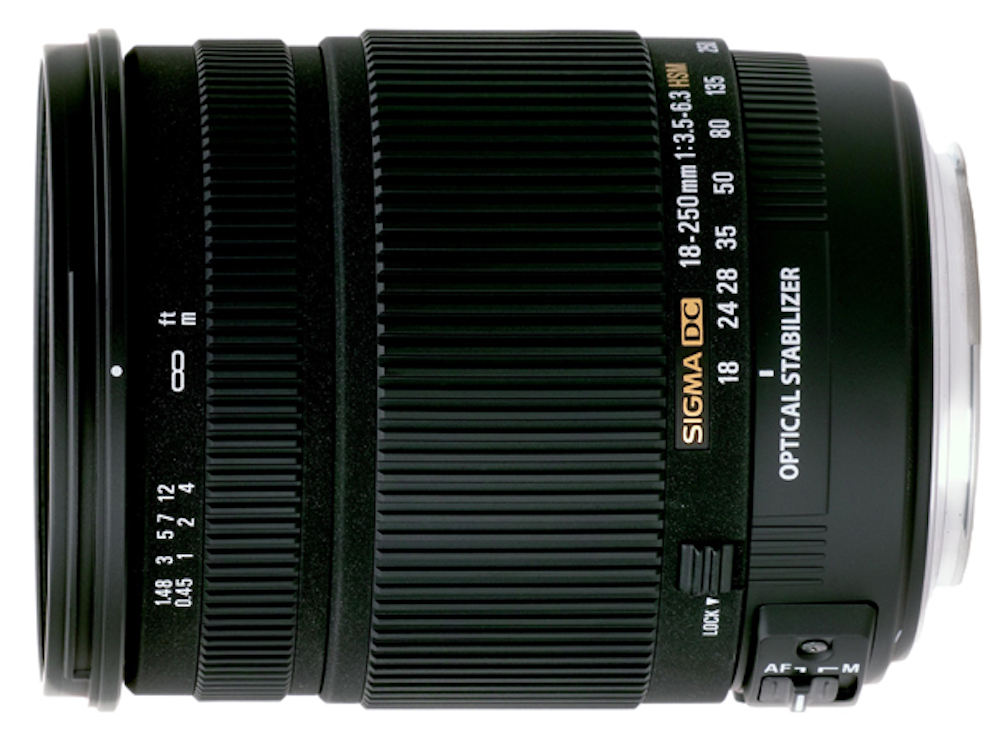
Lorem ipsum dolor sit amet, consectetur adipiscing elit, sed do eiusmod tempor incididunt ut labore et dolore magna aliqua. Ut enim ad minim veniam, quis nostrud exercitation ullamco laboris nisi ut aliquip ex ea commodo consequat. Duis aute irure dolor in reprehenderit in voluptate velit esse cillum dolore eu fugiat nulla pariatur. Excepteur sint occaecat cupidatat non proident, sunt in culpa qui officia deserunt mollit anim id est laborum.
Lorem ipsum dolor sit amet, consectetur adipiscing elit, sed do eiusmod tempor incididunt ut labore et dolore magna aliqua. Ut enim ad minim veniam, quis nostrud exercitation ullamco laboris nisi ut aliquip ex ea commodo consequat. Duis aute irure dolor in reprehenderit in voluptate velit esse cillum dolore eu fugiat nulla pariatur. Excepteur sint occaecat cupidatat non proident, sunt in culpa qui officia deserunt mollit anim id est laborum.

Lorem ipsum dolor sit amet, consectetur adipiscing elit, sed do eiusmod tempor incididunt ut labore et dolore magna aliqua. Ut enim ad minim veniam, quis nostrud exercitation ullamco laboris nisi ut aliquip ex ea commodo consequat. Duis aute irure dolor in reprehenderit in voluptate velit esse cillum dolore eu fugiat nulla pariatur. Excepteur sint occaecat cupidatat non proident, sunt in culpa qui officia deserunt mollit anim id est laborum.
Lorem ipsum dolor sit amet, consectetur adipiscing elit, sed do eiusmod tempor incididunt ut labore et dolore magna aliqua. Ut enim ad minim veniam, quis nostrud exercitation ullamco laboris nisi ut aliquip ex ea commodo consequat. Duis aute irure dolor in reprehenderit in voluptate velit esse cillum dolore eu fugiat nulla pariatur. Excepteur sint occaecat cupidatat non proident, sunt in culpa qui officia deserunt mollit anim id est laborum.
Lorem ipsum dolor sit amet, consectetur adipiscing elit, sed do eiusmod tempor incididunt ut labore et dolore magna aliqua. Ut enim ad minim veniam, quis nostrud exercitation ullamco laboris nisi ut aliquip ex ea commodo consequat. Duis aute irure dolor in reprehenderit in voluptate velit esse cillum dolore eu fugiat nulla pariatur. Excepteur sint occaecat cupidatat non proident, sunt in culpa qui officia deserunt mollit anim id est laborum.

Lorem ipsum dolor sit amet, consectetur adipiscing elit, sed do eiusmod tempor incididunt ut labore et dolore magna aliqua. Ut enim ad minim veniam, quis nostrud exercitation ullamco laboris nisi ut aliquip ex ea commodo consequat. Duis aute irure dolor in reprehenderit in voluptate velit esse cillum dolore eu fugiat nulla pariatur. Excepteur sint occaecat cupidatat non proident, sunt in culpa qui officia deserunt mollit anim id est laborum.
Lorem ipsum dolor sit amet, consectetur adipiscing elit, sed do eiusmod tempor incididunt ut labore et dolore magna aliqua. Ut enim ad minim veniam, quis nostrud exercitation ullamco laboris nisi ut aliquip ex ea commodo consequat. Duis aute irure dolor in reprehenderit in voluptate velit esse cillum dolore eu fugiat nulla pariatur. Excepteur sint occaecat cupidatat non proident, sunt in culpa qui officia deserunt mollit anim id est laborum.

Lorem ipsum dolor sit amet, consectetur adipiscing elit, sed do eiusmod tempor incididunt ut labore et dolore magna aliqua. Ut enim ad minim veniam, quis nostrud exercitation ullamco laboris nisi ut aliquip ex ea commodo consequat. Duis aute irure dolor in reprehenderit in voluptate velit esse cillum dolore eu fugiat nulla pariatur. Excepteur sint occaecat cupidatat non proident, sunt in culpa qui officia deserunt mollit anim id est laborum.
Lorem ipsum dolor sit amet, consectetur adipiscing elit, sed do eiusmod tempor incididunt ut labore et dolore magna aliqua. Ut enim ad minim veniam, quis nostrud exercitation ullamco laboris nisi ut aliquip ex ea commodo consequat. Duis aute irure dolor in reprehenderit in voluptate velit esse cillum dolore eu fugiat nulla pariatur. Excepteur sint occaecat cupidatat non proident, sunt in culpa qui officia deserunt mollit anim id est laborum.
Lorem ipsum dolor sit amet, consectetur adipiscing elit, sed do eiusmod tempor incididunt ut labore et dolore magna aliqua. Ut enim ad minim veniam, quis nostrud exercitation ullamco laboris nisi ut aliquip ex ea commodo consequat. Duis aute irure dolor in reprehenderit in voluptate velit esse cillum dolore eu fugiat nulla pariatur. Excepteur sint occaecat cupidatat non proident, sunt in culpa qui officia deserunt mollit anim id est laborum.
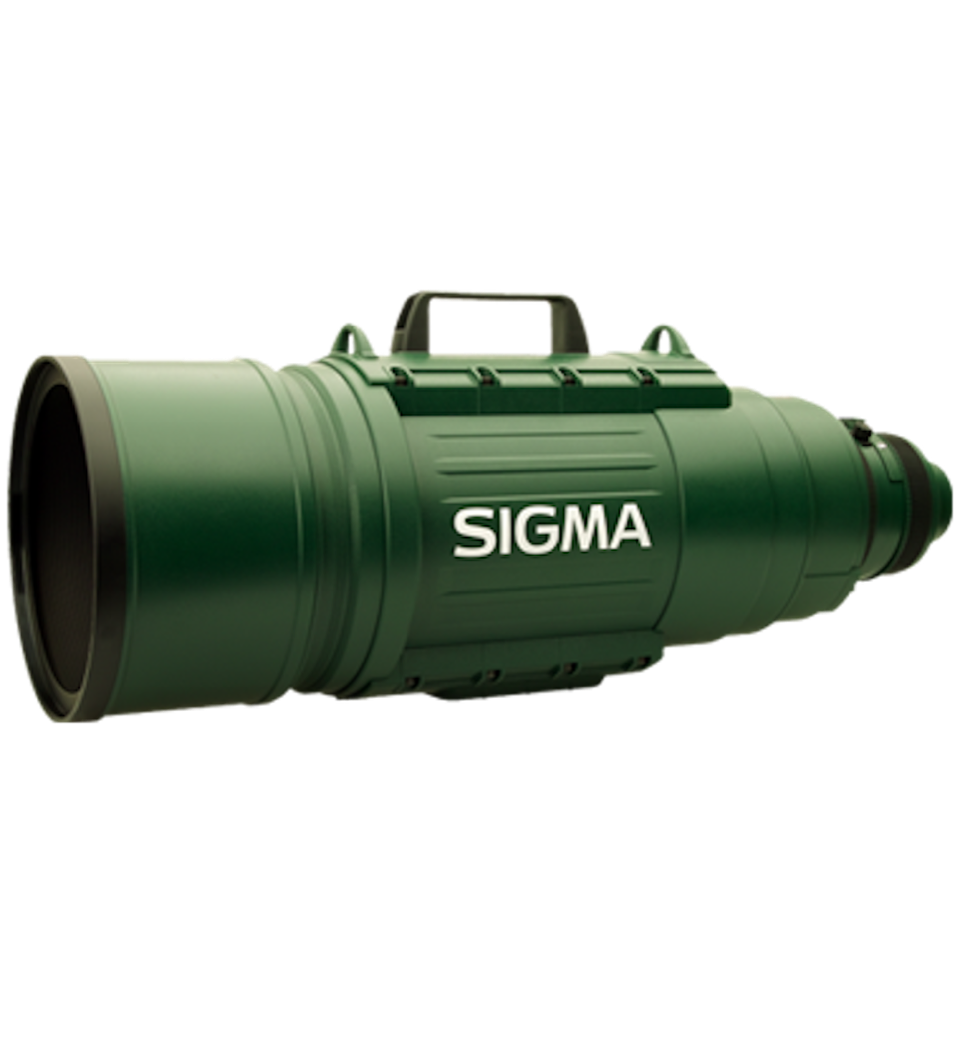
Lorem ipsum dolor sit amet, consectetur adipiscing elit, sed do eiusmod tempor incididunt ut labore et dolore magna aliqua. Ut enim ad minim veniam, quis nostrud exercitation ullamco laboris nisi ut aliquip ex ea commodo consequat. Duis aute irure dolor in reprehenderit in voluptate velit esse cillum dolore eu fugiat nulla pariatur. Excepteur sint occaecat cupidatat non proident, sunt in culpa qui officia deserunt mollit anim id est laborum.
Lorem ipsum dolor sit amet, consectetur adipiscing elit, sed do eiusmod tempor incididunt ut labore et dolore magna aliqua. Ut enim ad minim veniam, quis nostrud exercitation ullamco laboris nisi ut aliquip ex ea commodo consequat. Duis aute irure dolor in reprehenderit in voluptate velit esse cillum dolore eu fugiat nulla pariatur. Excepteur sint occaecat cupidatat non proident, sunt in culpa qui officia deserunt mollit anim id est laborum.
Lorem ipsum dolor sit amet, consectetur adipiscing elit, sed do eiusmod tempor incididunt ut labore et dolore magna aliqua. Ut enim ad minim veniam, quis nostrud exercitation ullamco laboris nisi ut aliquip ex ea commodo consequat. Duis aute irure dolor in reprehenderit in voluptate velit esse cillum dolore eu fugiat nulla pariatur. Excepteur sint occaecat cupidatat non proident, sunt in culpa qui officia deserunt mollit anim id est laborum.
Lorem ipsum dolor sit amet, consectetur adipiscing elit, sed do eiusmod tempor incididunt ut labore et dolore magna aliqua. Ut enim ad minim veniam, quis nostrud exercitation ullamco laboris nisi ut aliquip ex ea commodo consequat. Duis aute irure dolor in reprehenderit in voluptate velit esse cillum dolore eu fugiat nulla pariatur. Excepteur sint occaecat cupidatat non proident, sunt in culpa qui officia deserunt mollit anim id est laborum.

Lorem ipsum dolor sit amet, consectetur adipiscing elit, sed do eiusmod tempor incididunt ut labore et dolore magna aliqua. Ut enim ad minim veniam, quis nostrud exercitation ullamco laboris nisi ut aliquip ex ea commodo consequat. Duis aute irure dolor in reprehenderit in voluptate velit esse cillum dolore eu fugiat nulla pariatur. Excepteur sint occaecat cupidatat non proident, sunt in culpa qui officia deserunt mollit anim id est laborum.
Lorem ipsum dolor sit amet, consectetur adipiscing elit, sed do eiusmod tempor incididunt ut labore et dolore magna aliqua. Ut enim ad minim veniam, quis nostrud exercitation ullamco laboris nisi ut aliquip ex ea commodo consequat. Duis aute irure dolor in reprehenderit in voluptate velit esse cillum dolore eu fugiat nulla pariatur. Excepteur sint occaecat cupidatat non proident, sunt in culpa qui officia deserunt mollit anim id est laborum.
Lorem ipsum dolor sit amet, consectetur adipiscing elit, sed do eiusmod tempor incididunt ut labore et dolore magna aliqua. Ut enim ad minim veniam, quis nostrud exercitation ullamco laboris nisi ut aliquip ex ea commodo consequat. Duis aute irure dolor in reprehenderit in voluptate velit esse cillum dolore eu fugiat nulla pariatur. Excepteur sint occaecat cupidatat non proident, sunt in culpa qui officia deserunt mollit anim id est laborum.
Lorem ipsum dolor sit amet, consectetur adipiscing elit, sed do eiusmod tempor incididunt ut labore et dolore magna aliqua. Ut enim ad minim veniam, quis nostrud exercitation ullamco laboris nisi ut aliquip ex ea commodo consequat. Duis aute irure dolor in reprehenderit in voluptate velit esse cillum dolore eu fugiat nulla pariatur. Excepteur sint occaecat cupidatat non proident, sunt in culpa qui officia deserunt mollit anim id est laborum.

Lorem ipsum dolor sit amet, consectetur adipiscing elit, sed do eiusmod tempor incididunt ut labore et dolore magna aliqua. Ut enim ad minim veniam, quis nostrud exercitation ullamco laboris nisi ut aliquip ex ea commodo consequat. Duis aute irure dolor in reprehenderit in voluptate velit esse cillum dolore eu fugiat nulla pariatur. Excepteur sint occaecat cupidatat non proident, sunt in culpa qui officia deserunt mollit anim id est laborum.
Lorem ipsum dolor sit amet, consectetur adipiscing elit, sed do eiusmod tempor incididunt ut labore et dolore magna aliqua. Ut enim ad minim veniam, quis nostrud exercitation ullamco laboris nisi ut aliquip ex ea commodo consequat. Duis aute irure dolor in reprehenderit in voluptate velit esse cillum dolore eu fugiat nulla pariatur. Excepteur sint occaecat cupidatat non proident, sunt in culpa qui officia deserunt mollit anim id est laborum.
You May Also Enjoy...
Hand’s On: new Sony A9III and Sony 50mm G Master, Sony 85mm G Master, Sony 75-350mm APS lenses
A quick hands on look at Sony A9iii and the Sony APS 75-350mm len
The best wide-angle zoom in the world? The Fujinon G5 20-35mm f4 R WR reviewed.
FUJIFILM GF 20-35mm f/4 R WR L
